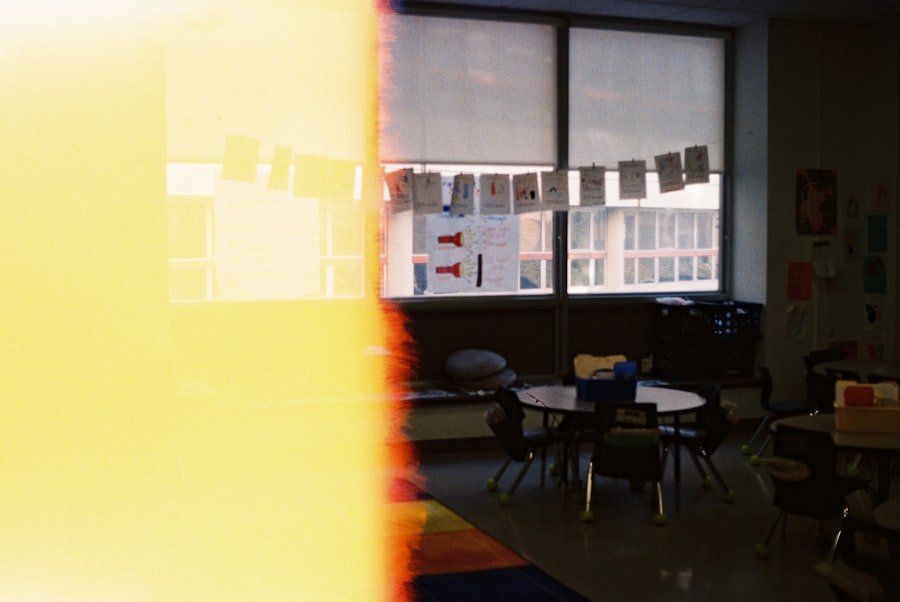Now Reading: When UI design becomes part of the story
-
01
When UI design becomes part of the story
When UI design becomes part of the story

As I delve into the world of storytelling, I find myself increasingly captivated by the role of User Interface (UI) design. It’s fascinating how UI design serves as a bridge between the narrative and the audience, shaping the way stories are told and experienced. In an age where digital narratives dominate, the interface through which we engage with these stories becomes paramount.
UI design is not merely about aesthetics; it is about crafting an experience that resonates with users, guiding them through a narrative journey that is both engaging and meaningful. In my exploration of UI design, I have come to appreciate its multifaceted role in storytelling. It influences how information is presented, how characters are developed, and how plots unfold.
A well-designed interface can enhance the emotional weight of a story, drawing users deeper into the narrative. Conversely, a poorly designed UI can detract from the experience, leaving users feeling disconnected or frustrated. Thus, understanding the intricacies of UI design is essential for anyone looking to create compelling narratives in today’s digital landscape.
Key Takeaways
- UI design plays a crucial role in storytelling by enhancing the user experience and creating emotional connections.
- The evolution of UI design in storytelling has led to more immersive experiences and interactive storytelling.
- UI design enhances the narrative by creating immersive experiences and shaping the user’s journey.
- Emotional connections can be created through UI design, adding depth and resonance to the storytelling experience.
- UI design in film, television, gaming, and brand storytelling has the power to visually enhance the narrative and engage the audience on a deeper level.
The Evolution of UI Design in Storytelling
Reflecting on the evolution of UI design, I am struck by how far we have come from the early days of digital storytelling. Initially, interfaces were rudimentary, often clunky and difficult to navigate. As technology advanced, so too did our understanding of user experience.
The introduction of graphical user interfaces (GUIs) marked a significant turning point, allowing for more intuitive interactions and richer storytelling possibilities. I remember the excitement of discovering early interactive narratives that utilized simple graphics and text to convey complex stories. As I observe the current landscape, it’s clear that UI design has evolved into a sophisticated art form.
Today’s interfaces are not only visually appealing but also strategically designed to enhance user engagement. The rise of mobile devices has further transformed UI design, necessitating a focus on responsive layouts and touch interactions. This evolution reflects a broader shift in storytelling itself; narratives are no longer linear but can branch out in multiple directions based on user choices.
This interactivity has opened up new avenues for storytelling, allowing for a more personalized experience that resonates with individual users.
Immersive Experiences: How UI Design Enhances the Narrative

Immersive experiences are at the heart of modern storytelling, and I find that UI design plays a crucial role in creating these environments. When I engage with a well-crafted interface, I feel as though I am stepping into another world, one where the narrative unfolds around me. Thoughtful UI design can transport users into the story, making them active participants rather than passive observers.
Elements such as sound design, animations, and transitions work together to create a seamless experience that enhances the narrative flow. In my own experiences with immersive storytelling, I have noticed how UI design can evoke specific emotions and reactions. For instance, a dark and moody interface can set a tone of suspense or mystery, while bright colors and playful animations can create a sense of joy and wonder.
This emotional resonance is vital; it allows users to connect with the story on a deeper level. As I navigate through these immersive experiences, I am often reminded that UI design is not just about functionality; it is about crafting an emotional journey that complements the narrative.
Creating Emotional Connections Through UI Design
One of the most powerful aspects of UI design is its ability to forge emotional connections between users and stories. As I reflect on my own interactions with various narratives, I realize that the interface often plays a pivotal role in shaping my emotional response. A thoughtfully designed UI can evoke feelings of nostalgia, excitement, or even sadness, depending on how it aligns with the story being told.
For example, when I encounter familiar visual motifs or sound cues within an interface, it can trigger memories associated with past experiences, deepening my connection to the narrative. Moreover, UI design can facilitate empathy by allowing users to step into the shoes of characters within a story. When I engage with an interface that encourages me to make choices or explore different perspectives, I find myself more invested in the outcomes of those characters.
This interactive element fosters a sense of agency and connection that traditional storytelling methods may lack. By creating interfaces that invite users to explore their emotions and experiences, designers can enhance the overall impact of the narrative.
The Power of Visual Storytelling: UI Design in Film and Television
In film and television, UI design has emerged as a powerful tool for visual storytelling. As I watch my favorite shows and movies, I often find myself captivated by how interfaces are integrated into the narrative. From futuristic displays in sci-fi films to user-friendly apps in contemporary dramas, UI design adds depth to the storytelling experience.
It provides context and information without overwhelming viewers, allowing them to immerse themselves fully in the plot. I have noticed that effective UI design in film and television often mirrors real-life technology while pushing boundaries to create something unique. This blend of realism and creativity enhances believability while also engaging viewers’ imaginations.
For instance, when I see characters interacting with sleek interfaces that respond intuitively to their commands, it reinforces my suspension of disbelief and draws me further into the story world. The seamless integration of UI elements into visual narratives exemplifies how design can elevate storytelling beyond mere dialogue and action.
Interactive Storytelling: How UI Design Shapes User Experience

The Power of Interactivity
Interactive storytelling transforms me from a passive viewer to an active participant, allowing me to influence the direction of the narrative. This shift in dynamic enables me to make choices that shape the story, making me feel more invested in the outcome.
Balancing User Agency and Narrative Coherence
A well-designed interface is crucial in maintaining this balance. It not only presents me with choices but also contextualizes them within the larger story arc. This ensures that my decisions feel meaningful and deliberate, rather than arbitrary.
Creating Engaging Interactive Experiences
Effective UI design is essential for creating interactive experiences that resonate with users on multiple levels. As I navigate through branching paths and explore different outcomes, I am reminded of the importance of intuitive interfaces that provide clear options and feedback. By doing so, interactive storytelling can create a truly immersive and engaging experience.
The Intersection of UI Design and Brand Storytelling
Brand storytelling has become increasingly important in today’s competitive landscape, and I find that UI design plays a vital role in conveying brand narratives effectively. As I interact with various brands online, I notice how their interfaces reflect their values and messaging. A cohesive UI design can reinforce brand identity while also enhancing user engagement.
For instance, when I visit a website with a clean and modern interface that aligns with a brand’s ethos, it creates a sense of trust and credibility. Moreover, effective UI design can help brands tell their stories in ways that resonate with their target audiences. By utilizing visual elements such as color schemes, typography, and imagery, brands can evoke specific emotions and associations that align with their narratives.
As I engage with these brands through their interfaces, I am often drawn into their stories—whether it’s through compelling visuals or interactive elements that invite exploration. This intersection of UI design and brand storytelling highlights the importance of creating cohesive experiences that resonate with users on both emotional and intellectual levels.
UI Design in Gaming: Enhancing the Player’s Journey
Gaming represents one of the most dynamic arenas for exploring the relationship between UI design and storytelling. As an avid gamer myself, I have experienced firsthand how thoughtful UI design can enhance my journey through virtual worlds. From menus to HUDs (heads-up displays), every element contributes to my overall experience as a player.
A well-designed interface not only provides essential information but also immerses me in the game’s narrative. In my gaming experiences, I have come to appreciate how UI design can guide players through complex narratives while maintaining engagement. For example, when I encounter an intuitive inventory system or clear mission objectives presented through visually appealing interfaces, it allows me to focus on the story rather than getting bogged down by mechanics.
This seamless integration of gameplay and narrative is crucial; it ensures that my emotional investment in the story remains strong throughout my journey.
The Future of UI Design in Storytelling
As I look toward the future of UI design in storytelling, I am filled with anticipation for what lies ahead. With advancements in technology such as virtual reality (VR) and augmented reality (AR), the possibilities for immersive storytelling are expanding exponentially. These technologies offer new ways for designers to create interfaces that blur the lines between reality and fiction, allowing users to engage with narratives in unprecedented ways.
I envision a future where AI-driven interfaces adapt to individual user preferences, creating personalized storytelling experiences that resonate deeply with each person’s unique journey. Imagine navigating through a narrative where choices are not only influenced by my decisions but also by my emotional responses as interpreted by intelligent algorithms. This level of interactivity could revolutionize storytelling as we know it, making every experience truly one-of-a-kind.
Case Studies: Successful Integration of UI Design and Storytelling
Throughout my exploration of UI design in storytelling, several case studies stand out as exemplary models of successful integration. One such example is “Journey,” an indie game that masterfully combines minimalist UI design with profound emotional storytelling. The game’s interface is stripped down to its essentials, allowing players to focus on exploration and connection rather than complex mechanics.
As I played through its stunning landscapes accompanied by evocative music, I felt an emotional bond with both the environment and other players—an experience made possible by its thoughtful UI. Another notable case is Netflix’s interactive film “Bandersnatch,” which showcases how branching narratives can be enhanced through effective UI design. The interface allows viewers to make choices at key moments, shaping the direction of the story while maintaining clarity throughout the experience.
As I navigated through various paths and outcomes, I was struck by how seamlessly the interface integrated with the narrative structure—demonstrating the potential for interactive storytelling in film.
The Impact of UI Design on the Narrative
In conclusion, my exploration of UI design reveals its profound impact on storytelling across various mediums. From enhancing emotional connections to creating immersive experiences, effective UI design serves as a vital component in shaping how narratives are conveyed and experienced. As technology continues to evolve, so too will our understanding of how to leverage UI design for compelling storytelling.
As I reflect on this journey, it becomes clear that UI design is not merely an afterthought; it is an integral part of crafting narratives that resonate with audiences on multiple levels. Whether through gaming, film, or brand storytelling, effective interfaces have the power to transform passive viewers into active participants—inviting them to engage deeply with stories that matter. As we move forward into an increasingly digital future, I am excited to see how innovative designers will continue to push boundaries and redefine what storytelling can be through thoughtful UI design.
When UI design becomes part of the story, it can truly enhance the overall gaming experience. One related article that delves into the importance of immersion in gaming is “Immerse Yourself: The Best Gaming Headsets for an Epic Experience”. This article discusses how investing in high-quality gaming headsets can take your gaming experience to the next level, allowing you to fully immerse yourself in the game world. By paying attention to details like sound quality and comfort, gamers can truly enhance their overall experience and feel more connected to the story being told.



























